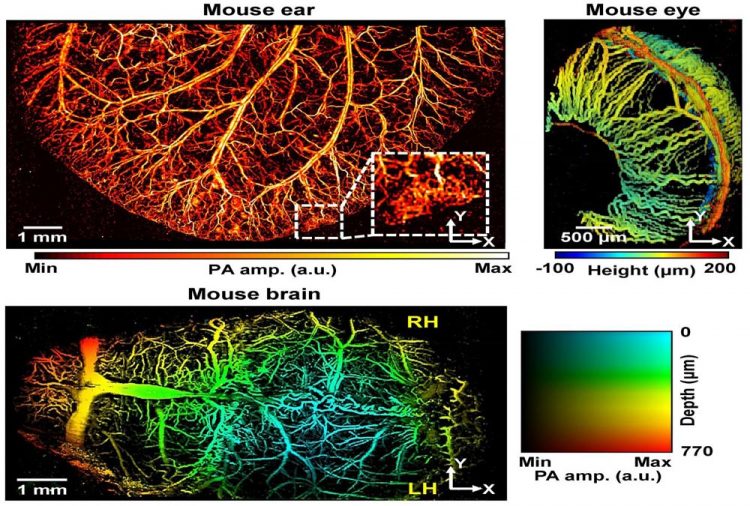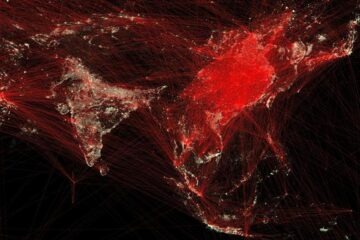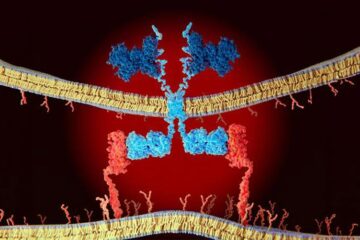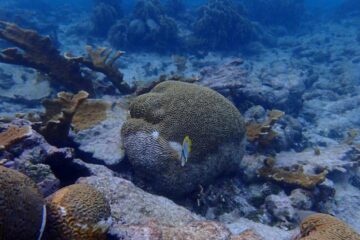Super-resolution photoacoustic microscopy finds clogged blood vessels

Photoacoustic images of microvessels in the ears, eyes, and brains of mice captured by the newly developed photoacoustic microscopy Credit: Chulhong Kim (POSTECH)
Professor Chulhong Kim of Creative IT Engineering from POSTECH with Jinyoung Kim, a research professor and Jongbeom Kim, a PhD student presented a fast photoacoustic microscopy system with custom-made scanning mirror in the international journal published by Nature, Light: Science and Applications.
This newly developed microscopy uses a stable and commercial galvanometer scanner with a custom-made scanning mirror and can find blocked or burst blood vessels by monitoring the flow of red blood cells without using a contrast absorber.
The photoacoustic microscopy images cells, blood vessels, and tissues by inducing vibrations when the optic energy is converted to heat after an object absorbs light from the laser beam fired.
The conventional photoacoustic microscopy systems using a galvanometer scanner have a narrow field of view because they do not scan photoacoustic waves but only the optical beam. The conventional photoacoustic microscopy systems using a linear motorized stage also have temporal limitation in making images.
The research team developed a new photoacoustic microscopy system with improved performances. It can scan both photoacoustic waves and optical beams simultaneously as they implemented the custom-made scanning mirror in the existing photoacoustic microscopy system. Also, it can monitor very small vessels using intrinsic red blood cells without a contrast absorber which helps the system to image blood vessels well.
Furthermore, the new system is 500 times faster than that of the conventional ones. With this improvement, it can demonstrate super-resolution image by localizing photoacoustic signals and the spatial resolution is enhanced by 2.5 times.
Their research accomplishment is meaningful in many ways. Especially, this system is expected to be very promising in diagnosis and treatment of stroke and cardiovascular disease. Because it can monitor and image the blood vessels with the flow of blood cells in real time, it can also be used in vascular disease which needs urgent diagnosis and treatment.
Moreover, it allows direct monitoring of hemodynamics in the microvessels. It is anticipated to be applied in various fields including hemodynamic response, contrast agent dynamics in blood vessels and transient microcirculatory abnormalities.
Professor Chulhong Kim said, “We successfully imaged microvessels in the ears, eyes, and brains of mice and a human fingertip with this new photoacoustic microscopy system. What we have developed can be a complimentary tool to the conventional brain imaging system and it can also be a promising tool for future preclinical and clinical studies.”
###
This research was financially supported by Ministry of Science and ICT, Korea, under the ICT Consilience Creative Program. It was also supported by the Pioneer Research Center Program through the National Research Foundation of Korea funded by the Ministry of Science and ICT and Basic Science Research Program through the National Research Foundation of Korea funded by the Ministry of Education.
Media Contact
Jinyoung Huh
jyhuh@postech.ac.kr
82-542-792-415
Media Contact
All latest news from the category: Life Sciences and Chemistry
Articles and reports from the Life Sciences and chemistry area deal with applied and basic research into modern biology, chemistry and human medicine.
Valuable information can be found on a range of life sciences fields including bacteriology, biochemistry, bionics, bioinformatics, biophysics, biotechnology, genetics, geobotany, human biology, marine biology, microbiology, molecular biology, cellular biology, zoology, bioinorganic chemistry, microchemistry and environmental chemistry.
Newest articles

Economies take off with new airports
A global study by an SUTD researcher in collaboration with scientists from Japan explores the economic benefits of airport investment in emerging economies using nighttime satellite imagery. Be it for…

CAR T–cell immunotherapy targets
Pan-cancer analysis uncovers a new class of promising CAR T–cell immunotherapy targets. Scientists at St. Jude Children’s Research Hospital found 156 potential CAR targets across the brain and solid tumors,…

Stony coral tissue loss disease
… is shifting the ecological balance of Caribbean reefs. The outbreak of a deadly disease called stony coral tissue loss disease is destroying susceptible species of coral in the Caribbean…





















